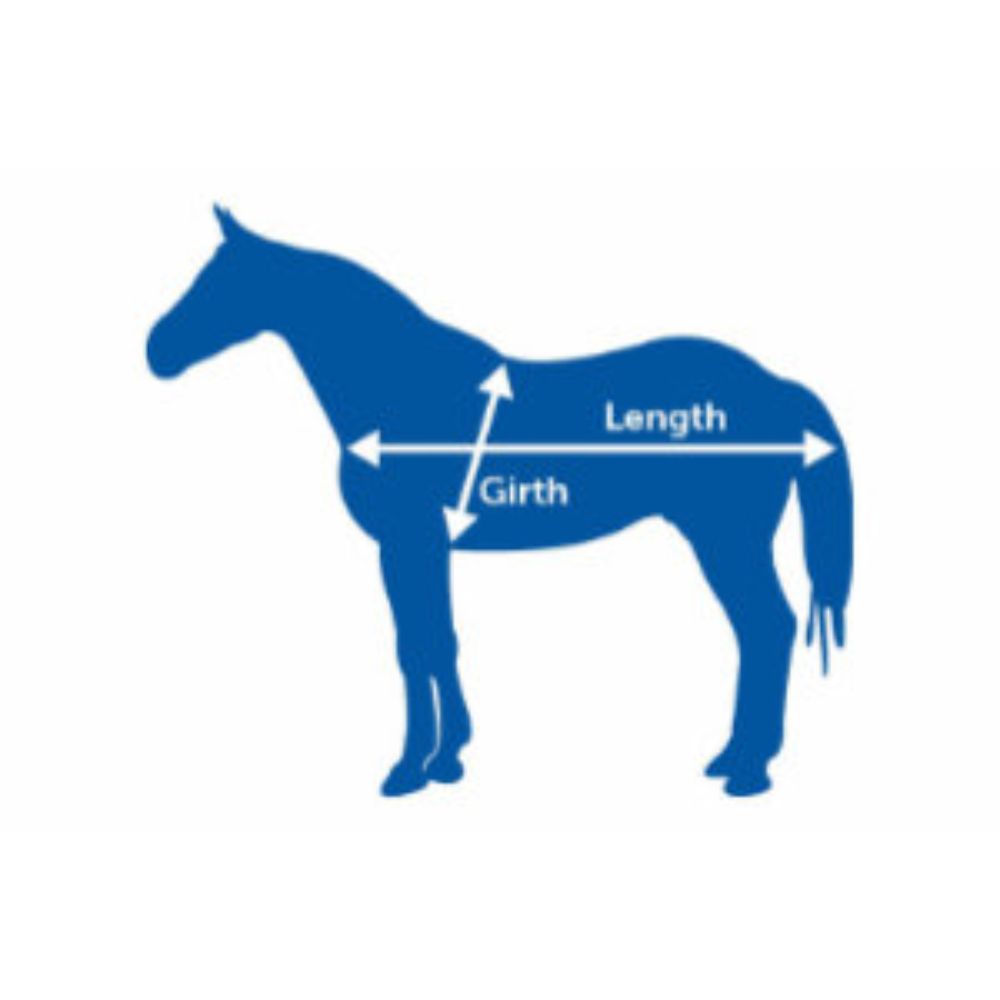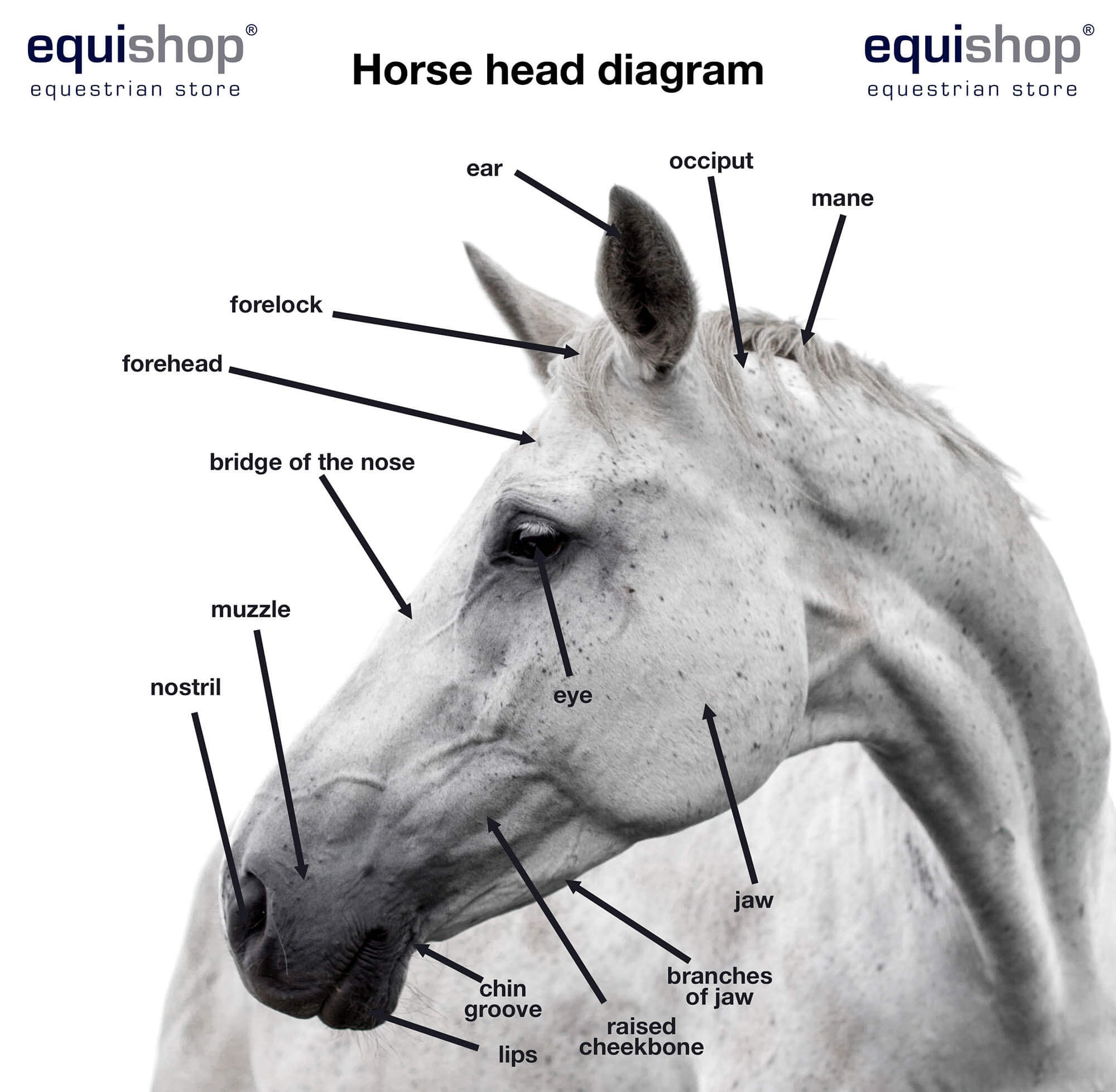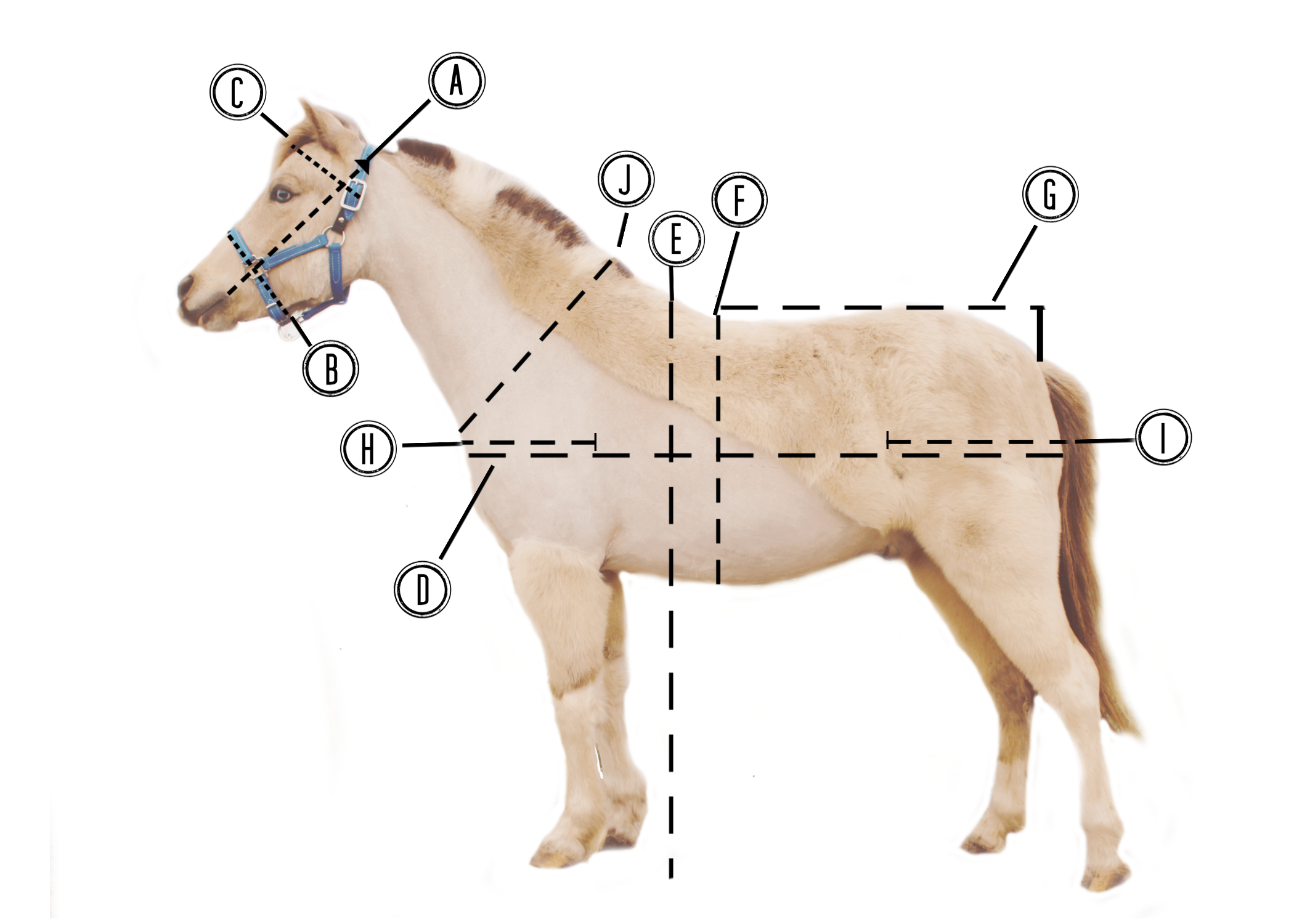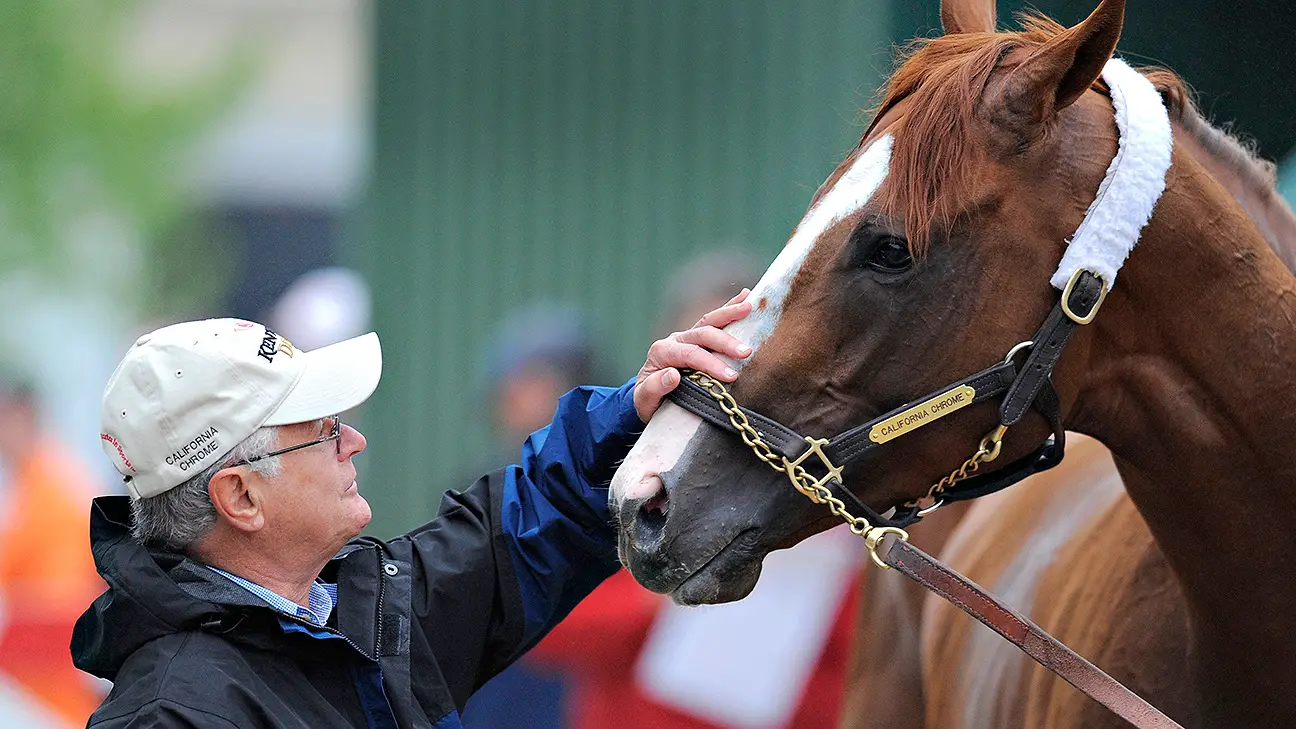When shopping for a halter for your horse, it is important to ensure that you have the correct size for your horse’s head. Measuring your horse for a halter can be a simple and straightforward process. In this article, we will discuss the steps you need to take to accurately measure your horse for a halter.
Measurement Tools

Having the right measurement tools on hand is essential for any project, and measuring a horse for a halter is no exception. It is important to have a measuring tape that is long enough to reach around the horse’s neck and to accurately measure the circumference. It is also helpful to have a flexible measuring device, such as a string or rope, to more accurately measure the circumference.
- Measuring Tape
- String or Rope (for flexibility)
- Tailor’s Chalk or Pencil
- Paper & Pencil (for recording measurements)
Preparing to Measure the Horse

Measuring a horse for a halter can be a challenging task. To ensure that the halter fits properly, it is important to take accurate measurements of the horse’s head. To begin, gather the following supplies:
| Item | Description |
|---|---|
| Ruler or tape measure | To measure the circumference of the head |
| Pencil or marker | To mark the measurement points on the horse |
| Plastic or paper bag | To cover the markings on the horse |
Once the supplies are gathered, it’s time to begin measuring. Start by preparing the horse for the measurements. Gently brush the horse’s head and neck to remove any dirt or debris that could interfere with the measurements. It is important to ensure that the horse is comfortable and relaxed during the measuring process. It is also important to ensure that the horse’s head is straight and centered, as any deviation could affect the accuracy of the measurements.
Measuring the Horse’s Head

Measuring the head of a horse can be tricky as each horse’s head is unique in shape and size. It is important that you ensure you get an accurate measurement, as a poorly fitting halter can cause discomfort and even injury. When measuring the horse’s head, you should use a flexible tape measure.
| Step | Instructions |
|---|---|
| 1 | Start at the point just behind the horse’s ear, wrap the tape measure around the head and across the forehead, over the eyes and back to the starting point. |
| 2 | Measure the circumference of the horse’s muzzle, starting at the corner of the mouth, wrap the tape measure around the muzzle and back to the starting point. |
| 3 | Measure the length of the horse’s head, starting at the point just behind the horse’s ears, run the tape measure down the side of the horse’s neck, over the muzzle and back to the starting point. |
Once you have taken all three measurements, you can use them to determine the correct size of halter for your horse. Be sure to double check your measurements before selecting a halter to ensure that it is the correct size for your horse.
Measuring the Horse’s Neck

Measuring the horse’s neck is an important part of measuring a horse for a halter. The measurement taken should be based on the horse’s age and conformation. Generally, a horse’s neck should be measured around the base of the neck, just behind the head and neck. To accurately measure the horse’s neck, a flexible measuring tape should be used. The measurement should be taken from the top of the shoulder blades, around the back of the neck where the halter would rest, and then around the top of the neck (where the horse’s mane is). This measurement should be taken in inches.
The measurement should be taken snugly, but not too tight, and should not be taken over the horse’s mane. If the halter is too big, it may be uncomfortable for the horse and may slip off; if the halter is too small, it may be too uncomfortable and may cause the horse to be unable to perform properly.
When measuring the horse’s neck, it is important to take multiple measurements to ensure accuracy. The measurements should be taken several times, and the average of the measurements should be used when determining the size of the halter. It is also important to note that some halters may require a larger size than the measurement taken. It is always best to err on the side of caution and buy a slightly larger size halter than the measurement taken.
Measuring the Horse’s Nose

It is important to measure the horse’s nose when selecting a halter. To ensure the halter fits the horse comfortably and securely, follow these steps:
- Locate the cheekbone at the side of the horse’s head.
- Measure from the cheekbone to the tip of the horse’s nose.
- Write down this measurement or remember it for when you buy the halter.
The measurement of the horse’s nose is the most important part of selecting the right halter. If the halter is too small, it will be uncomfortable and may put too much pressure on the horse’s face. If it is too big, it may be too loose and may slip off.
When selecting a halter, make sure to take into account the measurement of the horse’s nose. This will help ensure that you get a halter that fits your horse correctly.
Calculating the Right Halter Size

Selecting the right halter size for your horse is an important part of ensuring comfort and safety. To calculate the correct size, you need to measure the circumference of your horse’s head and nose.
To measure the head circumference, start at the point just below the ears. Place a measuring tape around the horse’s head and measure the circumference, keeping the tape snug but not too tight.
To measure the nose circumference, start at the point just below the eyes and measure around the horse’s nose. Again, keep the tape snug but not too tight.
Once you have both measurements, add the two together, and divide the total by two. This will give you the size of halter you need. Most manufacturers offer halters in sizes from small to extra large, which you can match to your horse’s measurements.
When selecting a halter, it’s important to consider the style and material of the halter. Leather halters last longer and provide more comfort for the horse, and some come with adjustable straps for a better fit. If you’re looking for a lightweight halter, nylon is a good choice.
It’s also important to make sure the halter fits correctly. The noseband should fit snugly around the horse’s nose without being too tight, and the headpiece should fit comfortably around the horse’s head.
Choosing the right size halter is essential for ensuring your horse’s comfort and safety. By following the steps outlined above, you can be sure to find the right size halter for your horse.
Halter Size Chart
When it comes to fitting a halter, it can be tricky to find the right size for your horse. To help make the process easier, here is a halter size chart you can use as a guide:
- For a pony or small horse (under 14 hands), the halter size should be a yearling/weanling size.
- For a horse (14 to 16 hands), the halter size should be a cob/horse size.
- For a large horse (over 16 hands), the halter size should be a full/draft size.
It is important to note that these sizes are just general guidelines. The best way to ensure you get the right size halter for your horse is to measure the circumference of your horse’s head. To do this, take a flexible measuring tape and measure around the widest part of your horse’s head, just below the ears and above the eyes. The measurement you get should correspond to the appropriate size in the halter size chart above.
Frequently Asked Questions
1. What factors should I consider when measuring a horse for a halter?
- The size of the horse’s head: Measure the distance from the corner of the horse’s eye to the corner of the other eye, and the distance from the middle of the horse’s forehead to the base of the jaw.
- The size of the horse’s neck: Measure the circumference of the horse’s neck at the widest point.
- The size of the horse’s muzzle: Measure the circumference of the horse’s muzzle at the widest point.
- The length of the horse’s nose: Measure the distance from the corner of the eye to the end of the horse’s nose.
- The size of the horse’s ears: Measure the length of the horse’s ears, from the base to the tip.
- The size of the horse’s noseband: Measure the circumference of the horse’s noseband.
- The size of the horse’s cheekpieces: Measure the length of the horse’s cheekpieces, from the bottom of the chin to the end of the cheekpieces.
2. How should I adjust the halter size for a growing horse?
If you are dealing with a growing horse, it is important to adjust the halter size regularly to ensure it fits properly. Here are a few tips to help you properly adjust the halter size for a growing horse:
- Measure the horse’s head regularly to make sure the halter still fits properly.
- Make sure the halter is not too tight or too loose. It should fit snugly but not cause any discomfort to the horse.
- Adjust the halter size as needed and check to make sure the fit is correct.
- If the halter is too small, purchase a larger size or make adjustments such as adding extra holes or adjusting the straps.
- If the halter is too large, purchase a smaller size or adjust the straps to make it fit properly.
By following these tips, you can make sure your horse’s halter is the proper size as it continues to grow.
3. What is the best way to make sure a halter fits a horse properly?
In order to make sure a halter fits a horse properly, there are several steps that should be taken:
- Check the size of the halter against the measurements of the horse. The halter should be a snug fit, but not so tight that it restricts movement or causes discomfort.
- Inspect the fit of the halter. The halter should not be too loose or too tight. It should be snug around the horse’s head and nose, but not so tight as to cause discomfort.
- Check the fit of the straps. The straps should fit snugly around the horse’s head without being too tight or too loose.
- Test the fit of the halter. Once the halter is on the horse, tug gently on the straps to make sure the halter does not slide around or cause discomfort.
- Make sure the halter is comfortable for the horse. The halter should not cause any rubbing or chafing, and should not restrict the horse’s movement.
By following these steps, the halter should fit the horse properly and ensure that it is comfortable.
4. What is the Most Important Aspect of Choosing a Halter for a Horse?
When selecting a halter for your horse, the most important aspect to consider is comfort. Horses should be able to wear a halter for hours at a time without experiencing any discomfort or irritation. To ensure that your horse is comfortable wearing its halter, consider the following factors:
- Size: Choose a halter that fits snugly and comfortably around your horse’s head, making sure that it does not rub against sensitive areas such as the nose or eyes.
- Material: Look for a halter that is made of soft, breathable materials such as cotton or leather, which will provide the most comfort.
- Adjustability: The halter should be adjustable so that you can get the perfect fit for your horse.
- Durability: The halter should be made of durable materials that will not easily break or tear.
When selecting a halter, always consider the comfort of your horse first. A well-fitting, breathable, adjustable, and durable halter is the best choice for any horse.
5. How do I know if a halter is the correct size for my horse?
Once you have the measurements of your horse’s head, you can use those measurements to determine if the halter you have chosen is the correct size for your horse. Here are some tips to help you choose the right size halter for your horse:
- The halter should be snug but not too tight. It should fit comfortably, without pinching any part of the horse’s face or head.
- The noseband should not be so tight that it restricts the horse’s breathing, or so loose that it can slip off.
- The throatlatch should be snug enough to keep the halter from slipping off, but not so tight that it interferes with the horse’s breathing or restricts movement.
- The cheek pieces should be long enough to allow the horse to comfortably turn its head without the halter being too tight.
- The crown piece should fit snugly around the horse’s poll and not be too loose or too tight.
If you are unsure of the best size halter for your horse, it is always best to consult a professional. A qualified horseperson or equine veterinarian can help you to find the best size halter for your horse.
Conclusion
Measuring a horse for a halter is an important step in ensuring that the halter will fit your horse properly. Having a halter that fits correctly will make it easier to handle and control your horse, and will increase your horse’s comfort. To measure your horse for a halter, you will need to take three measurements: the circumference of the neck, the circumference of the nose, and the distance between the noseband and the cheekpiece. Once you have taken these measurements, you can then use them to determine the correct size for your horse’s halter. By following these steps and taking the time to get an accurate measurement, you can ensure that your horse’s halter fits correctly.
References
-
“Measuring for a Halter”,
SmartPak Equine -
“Measuring for Halter Fit”,
The Horse Journals -
“Measuring a Horse for a Halter”,
EquiFit



